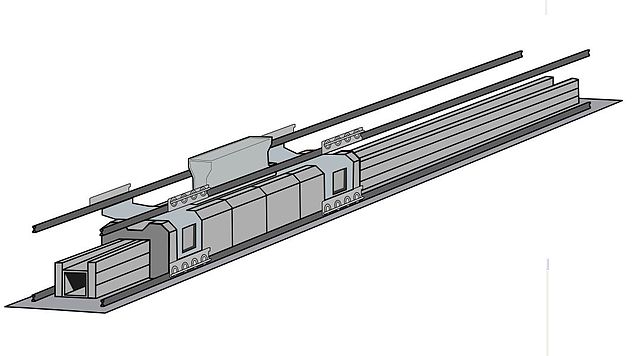A linear induction motor (LIM) is an alternating current (AC), asynchronous linear motor that works by the same general principles as other induction motors but is typically designed to directly produce motion in a straight line. Characteristically, linear induction motors have a finite primary or secondary length, which generates end-effects, whereas a conventional induction motor is arranged in an endless loop.
The Birmingham Airport Maglev shuttle
AirTrain JFK trains propel themselves using an aluminium induction strip placed between the rails.
A diagram of EMALS' induction motor
LIMTV Linear Induction Motor Test Vehicle in 1973
A linear motor is an electric motor that has had its stator and rotor "unrolled", thus, instead of producing a torque (rotation), it produces a linear force along its length. However, linear motors are not necessarily straight. Characteristically, a linear motor's active section has ends, whereas more conventional motors are arranged as a continuous loop.
This Line 6 Guangzhou Metro train manufactured by CRRC Sifang and Kawasaki Heavy Industries propels itself using an aluminium induction strip placed between the rails.
A linear motor for trains running Toei Ōedo Line
Close-up of the flat passive conductor surface of a motion control Sawyer motor
The Birmingham International Maglev shuttle







